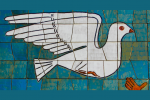January 18, 2017
Vestry Introductions

Teams that work well together understand that each member must respect the others’ opinions and priorities. Together, they find and honor what they value in common.
As you plan the first meeting with a “new” vestry, consider this exercise that helps identify shared values. It also serves as an ice-breaker that goes much deeper than, “Please state your name, how long you’ve been attending St. Swithens, and your favorite liturgical color.”
In advance of the meeting or retreat, ask each person attending to bring an object that represents why he/she loves or appreciates your faith community. No hints or examples about what to bring - just a request to prayerfully do it.
When assembled, to begin ask each person to explain the significance of his/her object. You might be quite surprised at what you learn, such as…
Someone had cancer and appreciated the visits and prayers by members of the congregation. Someone’s daughter found the courage to say no to a dangerous relationship because of the support received from youth group members and leaders. Someone experienced the greatest joy he’d ever felt when he delivered food baskets to shut-ins.
As people explain their objects, assign someone to record the essence of what each person’s object represents about his/her relationship with the church. The recorder should ask permission before putting words in someone’s mouth. For instance, a hospital visit might mean “family” or “belonging” to some, but might mean, “I saw Christ” to the person who experienced it. Do not worry about whether the significance relates to your congregation, the Episcopal Church overall or God/faith in general. Just record the essence of the object’s significance.
After everyone has explained his/her object, say a prayer asking the Holy Spirit to reveal what the list says about the group. Silently review the list. Then, whoever is leading the discussion asks: What does this list say about what we value about our faith community? Are their trends in our answers?
The facilitator should record the group’s responses on a new flip chart page – one to two words is plenty for each response, such as “family,” “caring service,” or “beautiful liturgy.” This new list is a narrowed down version, focusing on the things most valued in common.
Through this exercise, group members identify their shared values, as demonstrated by the objects. Bonus: stories about the inanimate objects can draw the leaders closer together. Hopefully, if controversy or dissention arises in the future, people will remember the tender insights they learned about each other, and remember how they hold in common values that are much more important than their differences.
Have you found an activity that works to build greater understanding and trust among a team? Please share!





